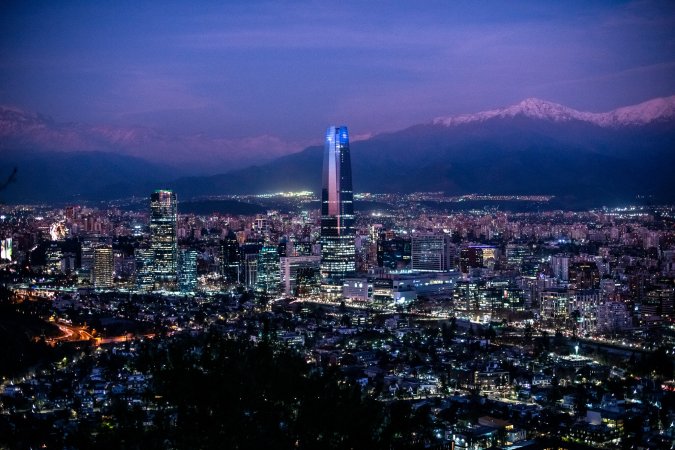Santiago Municipal District

Geographical area: Latin America and the Caribbean
Location: Santiago de Chile, Chile
City size: XL (above 5,000,000 inhabitants)
Promoter: Municipality of Santiago
Developer: Municipality of Santiago, Santiago Development Corporation and private developers
Start year:
End-year:
Implementation phase: Completed
Project size: Neighborhood
Total area of intervention (in sqm): 23.000.000
Total investments (in USD): 3.3 billion
The Santiago Municipal District is located in the city center and represents its historical neighborhood. The neighborhood has experienced a strong population decline given to the long dictatorship and its associated economic and social impacts. The area also experienced a decline in economic activities which led to underutilized, abandoned, and degraded buildings. The redevelopment initiative covers the entire neighborhood of around 24 square km. The project involved plots owned by both private landlords and public entities, such as the Municipality of Santiago and National Ministries. The project started in 1990 when the Municipality of Santiago developed the Renovation Plan of Santiago to boost and repopulate the historical central district. The planning phase adopted a participatory approach where the Municipality of Santiago engaged with residents to determine the goals and priorities of the redevelopment. The Municipality of Santiago also appointed the private non-profit Santiago Development Corporation to identify the land parcels suitable for the renovation. The Santiago Development Corporation was also responsible for the implementation phase which has been divided into two distinct programs. The Corporation stipulated public-private partnerships with the private developers selected through public calls of tender to complete the construction works. Santiago Development Corporation also performed a housing market analysis, the assessment of potential sellers and buyers, and the provision of national subsidies on behalf of the Government. The redevelopment project aimed to attract residents and boost economic activities in the neighborhood. Considering the repopulation of the Santiago downtown district, the renovation has been successful as the redevelopment of the area created numerous housing units, fostered the local housing market, and promoted the relocation of new residents in the district. The population residing in the neighborhood grew by 35% between 1992 and 2012. The restored attractiveness of the area also attracted new investments and business activities in the district, with a positive effect on the local economy. Despite the fulfillment of the repopulation goal, the initiative received strong criticism due to the lack of provision of public housing and the gentrification phenomenon. These negative effects were caused by the strong increase in land value and housing prices which discouraged social housing and prevented lower-income households from relocating in the neighborhood.
Land use zoning
As part of a repopulation program, the redevelopment project allocated the entire land to residential buildings.
Economic
The redevelopment program aimed to regenerate the area by improve its attractiveness and boost investments, particularly in the housing sector. The project succeeded in improving the economic environment for commercial activities in the central district of Santiago, repopulating the neighborhood and fostering the local businesses. The successful implementation helped to attract new investments in the area and create a sustained and growing housing market. The renovation of abandoned and degraded assets located in the district helped to increase the overall attractiveness and restore the positive perception of the district, which had been worsened by the negative effects of the dictatorship.
Environmental
The redevelopment project did not envision or achieve any significant environmental impact.
Social
Certificates
The project has not received any environmental certification.
Funding source
The regeneration project benefitted from both private and public funding sources. From the public sector, the initiative received funding from the Municipality of Santiago and the National Government. From the private sector, the individual redevelopment project was financed by the private developers. The agreements between private developers and the Santiago Development Corporation had to be signed by establishing a Public-Private Partnership between the two entities.
Financing and economic instruments
Most of the funding allocated to the Santiago Development Corporation for the redevelopment project came from the Municipality of Santiago. The Municipality transferred funds directly to the Corporation, accounting for around 72% of its total budget. The remaining part of the budget of the Corporation came from the company’s private resources generated through the lease and rent of owned properties. To finance the redevelopment projects and attract private developers, the Santiago Development Corporation and the Municipality of Santiago implemented the Subsidy for Urban Renovation, supported by the Ministry of Housing and Urban Development. The subsidy consists of a fixed-amount transfer amounting to 10% of the average cost of the new building, payable to the buyers who acquired a property within a pre-determined period in the Santiago district. At the beginning of the redevelopment program, the subsidy amounted to USD 8,347.62. The subsidies have been deployed by the Santiago Development Corporation and the Municipality of Santiago on behalf of the Ministry of Housing and Urban Development. Lastly, the individual construction and regeneration projects had been financed by private resources of the private developers involved. The total private investments amounted to around USD 3 billion.
References
Amirtahmasebi, R., Orloff, M., Wahba, S., & Altman, A. (2016). Regenerating Urban Land: A Practitioner’s Guide to Leveraging Private Investment, World Bank Group, Washington DC. Available here.
EBRD Green Cities Policy Tool. Repopulation programme: Santiago, Chile. Accessed on 03/05/2024. Available here.
Credits
Image from Jose Luis Stephens, retrieved here.